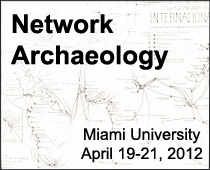Presentation by Brian R. Jacobson (Oklahoma State University).
Alongside the cameras and projectors sold in typical early film catalogues, in 1911 the French company Gaumont advertised a more revealing, if unexpected “film” device. Gaumont’s redresseurs statiques – static inverters – were designed to aleviate two problems for film exhibitors: first, the inverter ensured that light sources would be bright enough to project clear images (boosting luminosity, the ad claims, up to 75%). Second, and more importantly, by converting the alternating current available on many city power grids to the direct current used by Gaumont’s film machines, it guaranteed that exhibitors could perform in any part of Paris, which was served by a non-standardized system of AC and DC electrical networks. That Gaumont should produce such a device is no great surprise. The company’s studios and factories in Paris’s working-class northeast lay beyond the municipal grid and would not see electrical lines until after World War I.To power its growing business, Gaumont had to build its own substations and develop expertise in electrical technologies alongside films and standard filmmaking machines.
This paper will describe how Gaumont’s need for power pushed the company to link cinema’s industrialization with scientists’ and engineers’ efforts to develop electrical and communications networks into the 1920s. Under the guidance of inventors and industrialists, Gaumont’s film studios, workshops, and manufacturing facilities housed research and development that shaped modern cinema while also contributing to the emergence of Parisian electrical networks and wireless communication systems. Gaumont’s efforts to interface with Paris’s emerging technological networks, I will argue, helped lay the groundwork for today’s forms of media “convergence” and point to the importance of investigating the long and tangled histories of the public and private developments that shape media infrastrutures and technological systems.
Brian R. Jacobson is Assistant Professor of Screen Studies in the Department of English at Oklahoma State University. He specializes in film and architecture, early cinema, the history and philosophy of technology, and visual studies. During 2009-2010 he was a Fulbright Advanced Student Fellow to France and a Social Science Research Council fellow. His current project – Studios Before the System: Architecture, Technology, and Early Cinema – examines film studio architecture and urban infrastructure before 1915 in France and the US.



Pingback: Sorting Network Artifacts, Part 2 | Words in Space